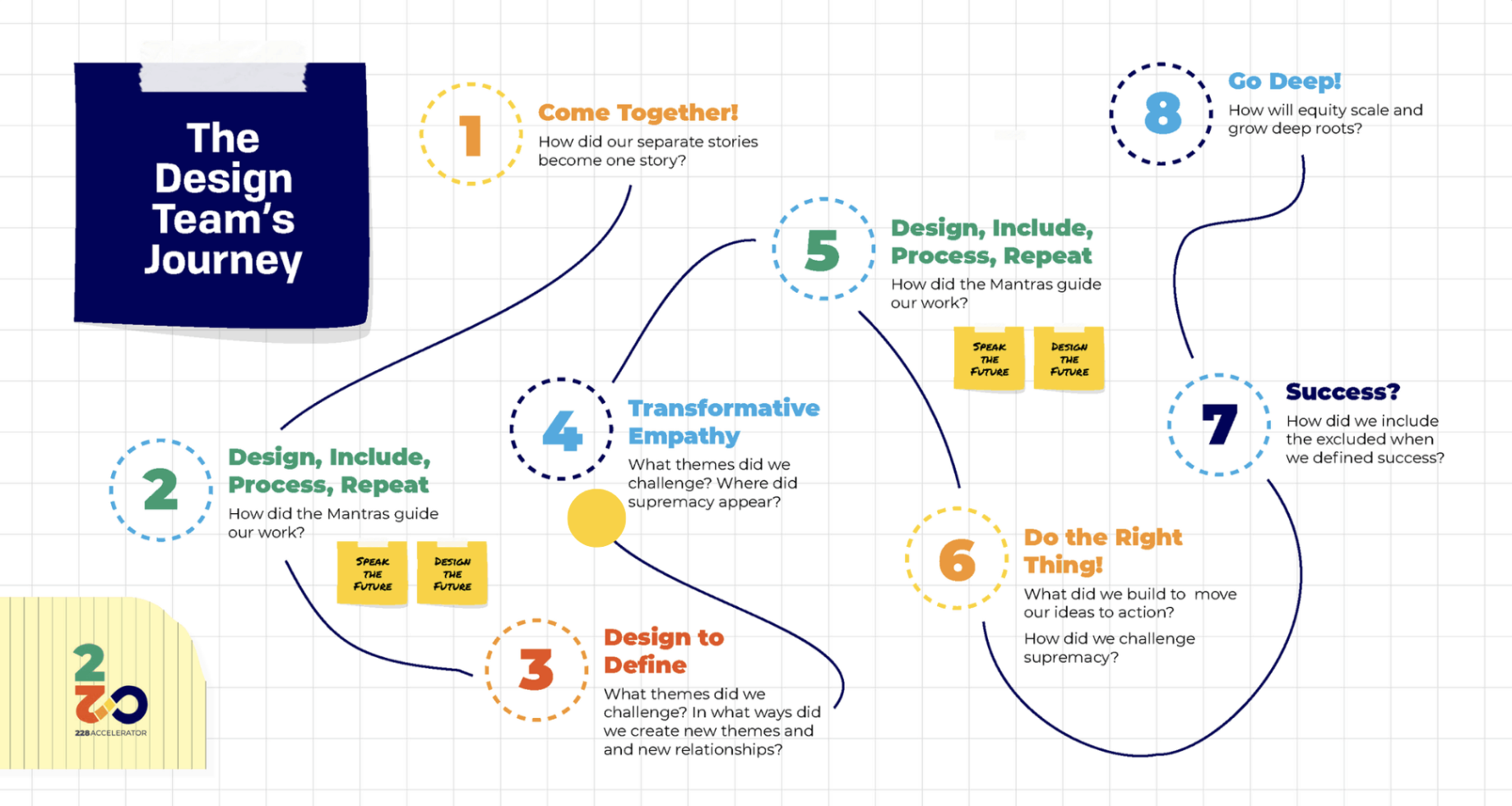Introducing the Latest Framework for equityXdesign
EquityXdesign, our framework for re-designing systems that foster racism and inequality, was published approximately 2 weeks after the 2016 election at a time when the equity discourse in the education ecosystem was taking center stage.
Much has happened in the past 5 years. We have experienced a wired racial reckoning while isolated in a pandemic. Living rooms became schools, with the most privileged of us forming our own local learning communities and units. Schools reopened with instructional leaders trading in their pedagogical skills and acumen for public health credentials, becoming experts at contact tracing, testing, and quarantining simultaneously.
As society changes, so must our framework. In order to move forward stronger, wiser, and more connected and integrated than before, we must continue to re-design for equity in order to solve problems rooted in systemic oppression. The reprise of the equityXdesign framework will offer tools that can help us accelerate equitable design at this moment in time.
Below you’ll find a summary of the equityXdesign revision, where we explore how designs for equity must become designs that heal, restore, and repair. The new equityXdesign framework must include healing and the attention it brings to the restoration and repair of individuals, who have the ability to transform relationships between people.
If this summary intrigues you, we invite you to download the entire equityXdesign 3.0 reprise.
Part One: Historical Context Matters for Radical Inclusion
Design at the Margins by Starting with Self
Explore how designs for equity must become designs that heal, restore, and repair. The new equityXdesign framework includes healing and the attention it brings to the restoration and repair of individuals who have the ability to transform relationships between people.
One Body, One People, and Defining Problems
The Public Body—the interdependent network of all bodies bound and rooted in the earth—creates a dynamic cosmic accountability that requires us to emerge as better humans for ourselves and our progeny. Equity problems and challenges are those that tear the Public Body apart and impact individual bodies. A design at the bleeding edge must attend to our bodies first as a requisite for the equitable design—the appearance, movement, and flexibility of our bodies creates our biases and how we make sense of the world. Healing is integral to an equitable design process.
Designing A Healing Discourse
If equity designers aren’t healing the impact of inequity and oppression in themselves, they will only create experiences and products that do not heal. Adopting a healing discourse acknowledges our shared membership in the universal Public Body, and the impact of segregation, the disease that holds inequity. Trauma-informed responses and social-emotional learning (SEL) are sound practice for students who have experienced acute and chronic system traumas. So it’s only fitting that practices for equity integrate these ways of being for adults and centers them as integral to enabling Radical Inclusion.
Part 2: Radical Inclusion is the Process
The problems of equity work—racism, sexism, classism, homophobia, etc.—are rooted in our distance from one another and our habits of exclusion. Radical inclusion is the intentional elimination of barriers that exclude others. Different bodies, stories, and experiences must be invited into the innovation conversation to create spaces where everyone can bring their full selves and be equally valued. This is radical inclusion.
Cede Power to Make the Invisible Visible
Part 3: Integrating Process and Product Enables Equity
Foresee the process as a product. Equity is a verb. It is a process, not an end point. A daily practice of radical inclusion will enable equity, because how we do anything is how we do everything. Inclusive design practices raise the voices of the marginalized, strengthen relationships across racial divides, shift positions, and recharge our democracy. Designing with equityXdesign reprise enables us to not just look at oppression, but to move past it.
Practicing in Public Speaks and Designs the Future
Equity work remains the work of our time, and this movement needs a studio. One that allows us to practice new relationships with ourselves and design new ones with others. We offer three studios as collaborative learning spaces where participants can begin prototyping new relationships, learn more about and begin to build the foundations of what is needed to scale and design equitable systems. We offer three studios as collaborative learning spaces.
To be a part of the conversation, sign up for our biweekly newsletter to receive insights and updates from 228 Accelerator.

